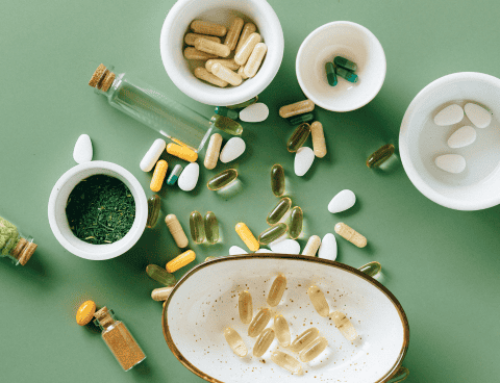Finish your lift, immediately crush a protein shake. That seems to be the preferred modus operandi of athletes and fitness-minded people everywhere. The common mode of thinking says, “The quicker you get the protein in, the more effective it will be!”
But how did this idea become gospel? I partially blame EAS Myoplex and their “don’t waste your workout” commercials. Those ads specifically emphasized a post-workout “30-minute window” during which their product had to be consumed to be effective. They show Brady Quinn finishing his workout and literally sprinting to the product, driving home the importance of immediate post-workout protein consumption.
The ads played on one of athletes’ biggest fears—wasting their workout. After all the blood, sweat and tears you put into a grueling session, do you really want to risk throwing your progress away? That’s a terrifying thought, and the ads helped create a shared mindset that protein needs to be consumed as quickly as possible after a workout to be effective.
But is this really true? Should we lug our protein shakes around all day so we will have them on hand immediately post-workout? Is the stress worth it?
STACK talked to Brad Schoenfeld, Ph.D, CSCS, and Brad Pilon, intermittent fasting expert, to get to their take on the timing of post-workout protein.
RELATED: Should I Drink a Protein Shake Before and After I Work Out?
Taking in a certain amount of specific nutrients at a certain time in relation to workouts is called “nutrient timing.” One of the supposed most important periods to practice nutrient timing is within the “anabolic window of opportunity,” which exists for about 45 minutes following the end of your final rep. During this window, your body is in prime condition to quickly absorb and efficiently use nutrients such as protein. Essentially, your body turns protein into muscle more efficiently during this period. To the average lifter, it makes sense. Your muscles are pumped up right after you lift, and you want to get protein into them before they deflate.
But research on the anabolic window has been inconclusive at best. Although some short-term studies found a significant benefit in consuming post-workout protein in a timely manner, long-term research on the anabolic window of opportunity often painted a different picture. One study “refuted the commonly held belief that the timing of protein intake in and around a training session is critical to muscular adaptations, indicating that consuming adequate protein in combination with resistance exercise is the key factor for maximizing muscle protein accretion.” That means the researchers found that eating enough protein was far more important than when you eat it.
A different study found that “collectively, the available data lack any consistent indication of an ideal post-exercise timing scheme for maximizing [muscle protein synthesis].”
RELATED: How Food Affects Your Muscle-Building Hormones
Schoenfeld explains the science behind the anabolic window of opportunity: “The more proteins you synthesize, the more hypertrophy [muscle growth] you’re going to have. For growth to occur, protein synthesis has to exceed protein breakdown. While you lift, you’re in a catabolic state. That means your body is breaking down muscle proteins. You’re body remains in this state after your workout, until you consume nutrients. Then your body goes into an anabolic state, which allows for muscle growth. Long-term studies have found that this post-workout period wherein your body more efficiently synthesizes protein is much longer than initially thought. It’s not the sudden drop off people once thought, but much more gradual. The narrowness of the window that we initially thought doesn’t seem to hold up.”
Basically, he says chugging a protein shake a couple hours after your lift is no worse than chugging one immediately post-workout. STACK Expert Brian St. Pierre also wrote about this topic on his website: “The anabolic window of opportunity is actually a whole lot bigger than we used to believe. Recent data suggest that the total amount of protein and carbohydrate you eat, over the course of the day, is more important for body composition and performance than nutrient timing strategies.”
St. Pierre says that how much you eat, what you eat and why you eat are all more important than when you eat. Pilon echoes St. Pierre’s comments, saying, “Your daily protein intake seems to matter much more than the specific timing of protein intake when the goal is overall muscle growth. Focusing on specific meal timing either pre or post-workout seems to be much less important than focusing on consistent overall daily macronutrient intake.”
So if the anabolic window of opportunity is not as small as we initially thought, when exactly does it end? Based on a study from McMaster University, it could last up to 48 hours. As you can see in this graph from the study, protein synthesis levels do gradually drop over time. But it seems to be a much slower process than people used to think. “I think it’s safe to say that if you’re resistance training with any consistency—basically anything around three times per week or more—then every meal you eat is both a pre- and post-workout meal, as the effects of a single workout seem to last for as long as 48 hours, if not longer,” Pilon says.
There is a drop-off in muscle protein synthesis levels as post-workout protein consumption is delayed, but it seems to be very slim for the first 3-5 hours. That small drop-off certainly doesn’t equate to “wasting your workout.” While other nutrient timing strategies, such as those applied to caffeine and carbs, have been supported by science, it seems that the anabolic window of opportunity is not the holy grail for protein consumption it was once thought to be.
To read more from Brad Schoenfeld, check out his book The M.A.X. Muscle Plan. To read more about intermittent fasting, check out Brad Pilon’s website.
RECOMMENDED FOR YOU
MOST POPULAR
Finish your lift, immediately crush a protein shake. That seems to be the preferred modus operandi of athletes and fitness-minded people everywhere. The common mode of thinking says, “The quicker you get the protein in, the more effective it will be!”
But how did this idea become gospel? I partially blame EAS Myoplex and their “don’t waste your workout” commercials. Those ads specifically emphasized a post-workout “30-minute window” during which their product had to be consumed to be effective. They show Brady Quinn finishing his workout and literally sprinting to the product, driving home the importance of immediate post-workout protein consumption.
The ads played on one of athletes’ biggest fears—wasting their workout. After all the blood, sweat and tears you put into a grueling session, do you really want to risk throwing your progress away? That’s a terrifying thought, and the ads helped create a shared mindset that protein needs to be consumed as quickly as possible after a workout to be effective.
But is this really true? Should we lug our protein shakes around all day so we will have them on hand immediately post-workout? Is the stress worth it?
STACK talked to Brad Schoenfeld, Ph.D, CSCS, and Brad Pilon, intermittent fasting expert, to get to their take on the timing of post-workout protein.
RELATED: Should I Drink a Protein Shake Before and After I Work Out?
Taking in a certain amount of specific nutrients at a certain time in relation to workouts is called “nutrient timing.” One of the supposed most important periods to practice nutrient timing is within the “anabolic window of opportunity,” which exists for about 45 minutes following the end of your final rep. During this window, your body is in prime condition to quickly absorb and efficiently use nutrients such as protein. Essentially, your body turns protein into muscle more efficiently during this period. To the average lifter, it makes sense. Your muscles are pumped up right after you lift, and you want to get protein into them before they deflate.
But research on the anabolic window has been inconclusive at best. Although some short-term studies found a significant benefit in consuming post-workout protein in a timely manner, long-term research on the anabolic window of opportunity often painted a different picture. One study “refuted the commonly held belief that the timing of protein intake in and around a training session is critical to muscular adaptations, indicating that consuming adequate protein in combination with resistance exercise is the key factor for maximizing muscle protein accretion.” That means the researchers found that eating enough protein was far more important than when you eat it.
A different study found that “collectively, the available data lack any consistent indication of an ideal post-exercise timing scheme for maximizing [muscle protein synthesis].”
RELATED: How Food Affects Your Muscle-Building Hormones
Schoenfeld explains the science behind the anabolic window of opportunity: “The more proteins you synthesize, the more hypertrophy [muscle growth] you’re going to have. For growth to occur, protein synthesis has to exceed protein breakdown. While you lift, you’re in a catabolic state. That means your body is breaking down muscle proteins. You’re body remains in this state after your workout, until you consume nutrients. Then your body goes into an anabolic state, which allows for muscle growth. Long-term studies have found that this post-workout period wherein your body more efficiently synthesizes protein is much longer than initially thought. It’s not the sudden drop off people once thought, but much more gradual. The narrowness of the window that we initially thought doesn’t seem to hold up.”
Basically, he says chugging a protein shake a couple hours after your lift is no worse than chugging one immediately post-workout. STACK Expert Brian St. Pierre also wrote about this topic on his website: “The anabolic window of opportunity is actually a whole lot bigger than we used to believe. Recent data suggest that the total amount of protein and carbohydrate you eat, over the course of the day, is more important for body composition and performance than nutrient timing strategies.”
St. Pierre says that how much you eat, what you eat and why you eat are all more important than when you eat. Pilon echoes St. Pierre’s comments, saying, “Your daily protein intake seems to matter much more than the specific timing of protein intake when the goal is overall muscle growth. Focusing on specific meal timing either pre or post-workout seems to be much less important than focusing on consistent overall daily macronutrient intake.”
So if the anabolic window of opportunity is not as small as we initially thought, when exactly does it end? Based on a study from McMaster University, it could last up to 48 hours. As you can see in this graph from the study, protein synthesis levels do gradually drop over time. But it seems to be a much slower process than people used to think. “I think it’s safe to say that if you’re resistance training with any consistency—basically anything around three times per week or more—then every meal you eat is both a pre- and post-workout meal, as the effects of a single workout seem to last for as long as 48 hours, if not longer,” Pilon says.
There is a drop-off in muscle protein synthesis levels as post-workout protein consumption is delayed, but it seems to be very slim for the first 3-5 hours. That small drop-off certainly doesn’t equate to “wasting your workout.” While other nutrient timing strategies, such as those applied to caffeine and carbs, have been supported by science, it seems that the anabolic window of opportunity is not the holy grail for protein consumption it was once thought to be.
To read more from Brad Schoenfeld, check out his book The M.A.X. Muscle Plan. To read more about intermittent fasting, check out Brad Pilon’s website.










